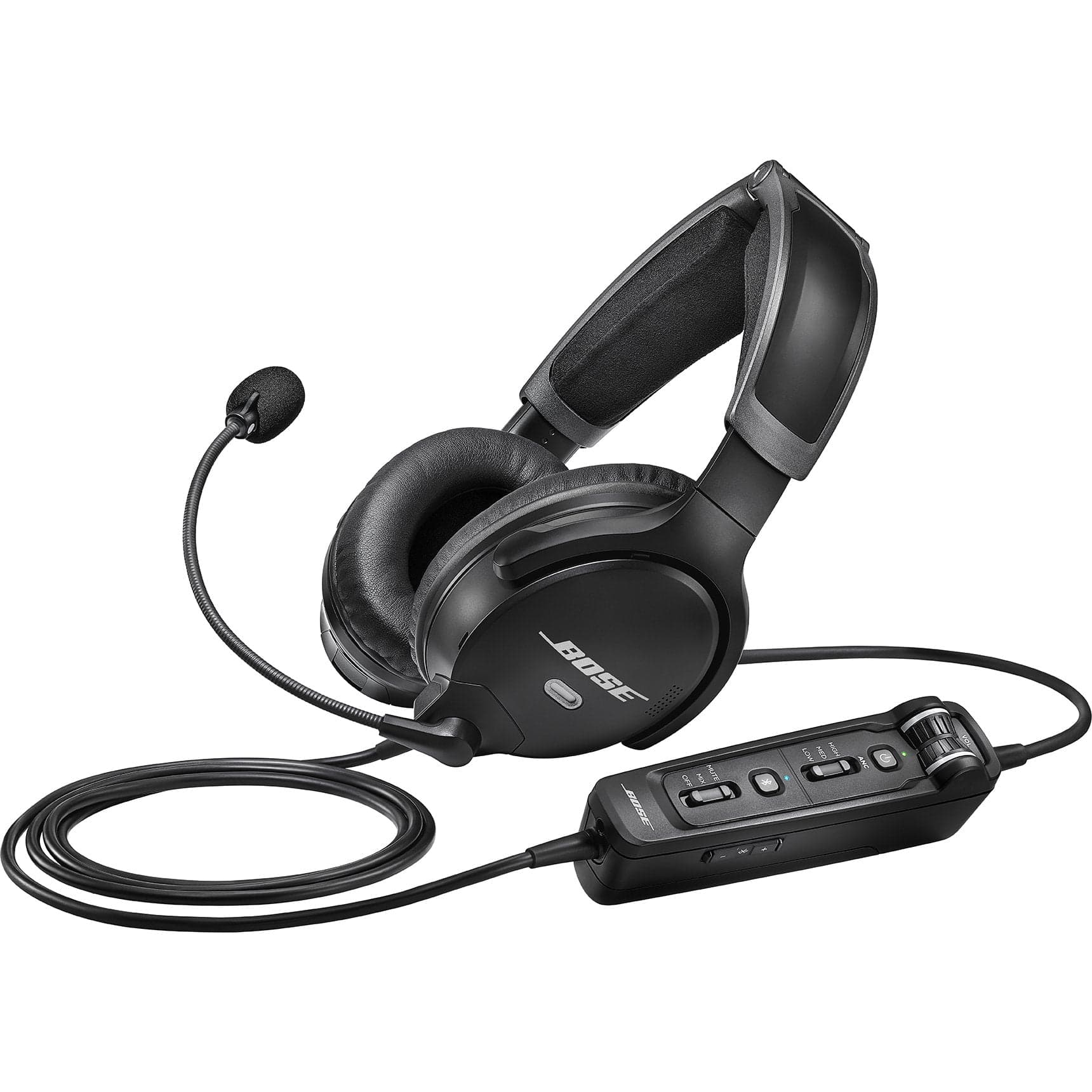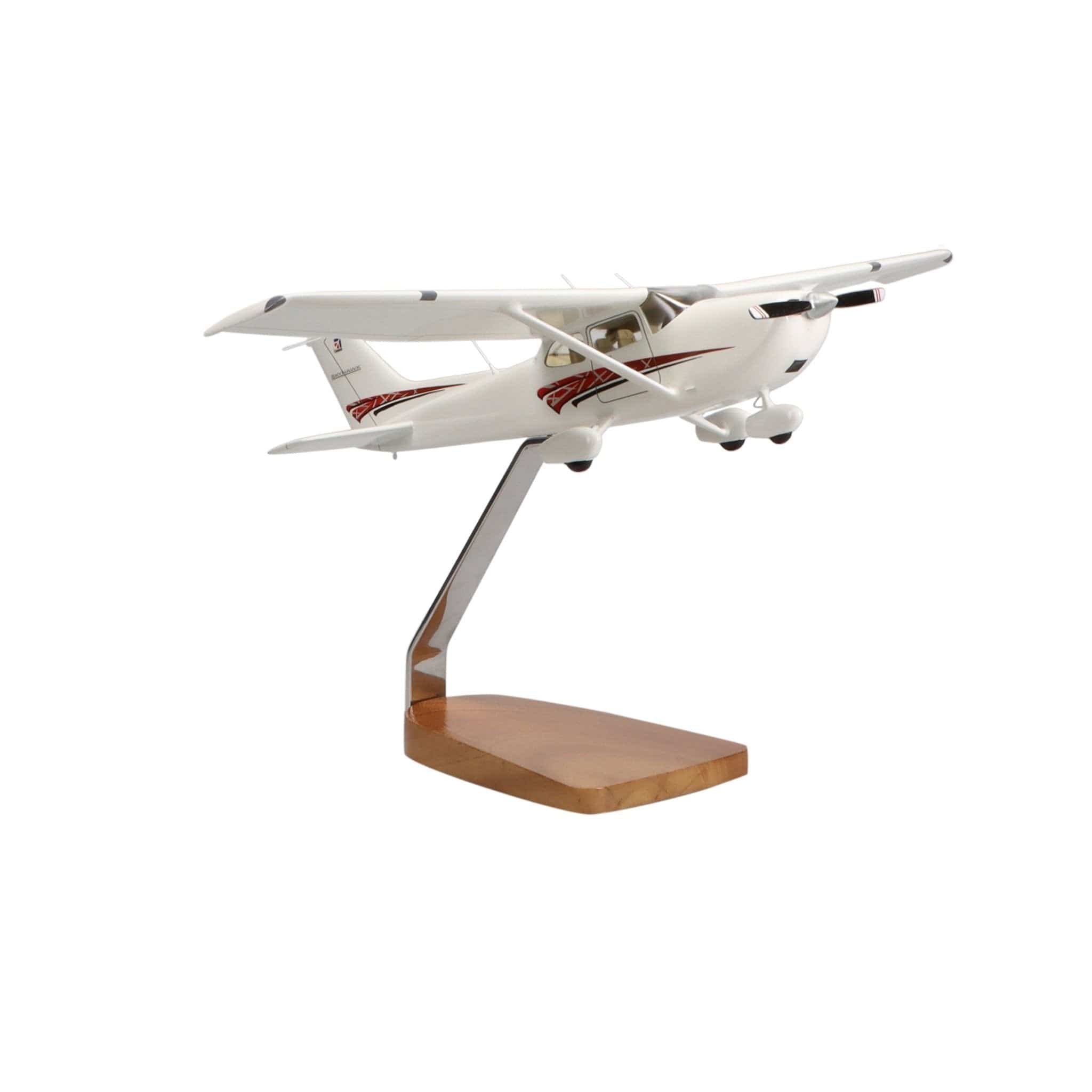“Make it strong. Make it simple. Make it fast.”
To this day these are the Mooney Airplane Company’s words to live by as they design their legendary aircraft. The Mooney mentality has developed quite a following with Mooney aficionados - self-described as “Mooniacs.”
One of the Mooniacs’ aircraft of choice is the Mooney M20 because what pilot would say no to a plane that promises and actually delivers increased speed with a fuel-sipping appetite? This is the hallmark of Mooney’s well-loved low wing speedster which still had two variants in production more than 65 years after the original model debuted.
Thanks to modern technology and ceaseless innovation, Mooney Airplane Company remains devoted to its core values, making certain that each M20 model embodies robustness, straightforwardness, and tremendous speed.
Today we will look back at how the Mooney M20 got its beginning, what makes it so distinctive, and how you too can be the owner of one of the many M20 variants.
History of Mooney Airplane Company

Mooney in 1929
The Mooney Airplane Corporation was founded by brothers Albert and Arthur Mooney who had worked for another aircraft manufacturer and wanted to branch out on their own. Unfortunately, the company filed for bankruptcy a year later thanks to the Great Depression. The brothers went back to work for another aviation manufacturer until after World War II.
Mooney in 1948
The brothers restarted the company as Mooney Aircraft Incorporated. They started out with the single-place Mooney Mite M-18 before branching out to the four-place M20 which would generate multiple variant spinoffs.
The M22 Mustang was next up although it was unsuccessful. The subsequent MU-2 and Aircoupe production rights also failed to generate significant income, and the company went bankrupt in 1969. During the early 1970s, the Mooney line was continued through a series of sales to various other entities.
Mooney in 1976
The new M20J 201 and its turbocharged version, the M20K 231, were released and generated the financial success that Mooney had been hoping for. Then the recession of the early 1980s hit and sales fell again though the design team continued to improve the 201 and 231 aircraft. With the company in trouble again, it was sold to from buyer to buyer with the M20M TLS and 201AT trainer being produced in the late 1980s.
Mooney in the 90’s & Early 2000’s
The ‘90s were another slow decade for Mooney with not much traction although the M201J 201, M20R Ovation, M20M Bravo, and M20K Encore were all in production. Mooney went through bankruptcy yet another time in 2001 and its assets were again shuffled through a series of buyers. Eventually in 2004, Mooney became a publicly traded company and Gretchen L. Jahn became Mooney’s CEO – the first female CEO of a United States aircraft manufacturer. The new M20TN Acclaim, the Ovation2 GX and Bravo GX were all released between 2004 and 2006 with the M20TN Acclaim Type S following in late 2007.
The 2008 recession called for extreme cuts and layoffs. By April of 2010, Mooney had gone 18 months without producing a single aircraft thanks to a backlog of unsold planes. Throughout the next decade, Mooney continued to be in a state of flux. It was sold several more times and produced limited aircraft during this period although it did release the new M20V Acclaim Ultra and M20U Ovation Ultra. As of January 2020, Mooney’s future is again uncertain, and it is said to be seeking investors.
The company itself may have experienced plenty of ups and downs, but despite that, many of its aircraft, especially from the M20 line have excelled. To date, Mooney Aircraft Company has been awarded 21 type certificates, has produced 12,000 aircraft, and holds 130 world speed and altitude records.

(source: wikipedia.org )
Designing the Mooney M20
The 20th Al Mooney aircraft design was appropriately christened the Mooney M20. It became his most successful design and included many variants spanning over 65 years.
The Mooney M20 got its start as an expansion of the M-18 Mite – a single place low-wing monoplane with retractable tricycle landing gear. The M-18 was marketed as a personal airplane for World War II fighter pilots following the war. Those pilots may have appreciated flying the Mite, but the single seat nature of the aircraft inherently limited the market. The Baby Boom was on, and these pilots were having families. If they wanted to take their wife and kids on an airborne adventure with them, they would need a bigger plane. Production of the M18 Mite wrapped in 1954, and the new M20 made its first flight the following year in 1955.
The premise of the M20 was to provide a four-place private plane capable of fast speeds with limited fuel consumption. The original M20 and the first variant, the M20A, both included wooden construction in the wings and tail. Following multiple in-flight breakups of water damaged wood tails, Mooney issued Mooney Service Bulletin M20-170A which corresponded to FAA Airworthiness Directive 86-19.10. All existing M20s would have their wooden components replaced with metal, and going forward, future M20 aircraft would utilize an all-metal construction.
Distinctive Design Features of the Mooney M20

The Mooney M20 line is known for including features that optimize speed and fuel efficiency. Here is what to look for in the latest Mooney designs.
Laminar Wings
The laminar wings of the M20 are inspired by the P-51 Mustang fighter planes. They are engineered for decreased drag and optimum fuel efficiency.
Carry-Through Wing Spar
Both the structural stability and the ride quality get a lift with the M20’s unique to its class carry-through wing spar. A single spar runs from wingtip to wingtip offering strength and a smooth ride.
Steel-Tube Cabin Frame
Safety is another tenant of Mooney construction and it is apparent in the 4130 Chromoly high-strength steel cage that encloses the cockpit of current M20 models.
Lowest Flat Plate Drag Area
One of the keys to Mooney’s fuel efficiency is maximizing the aerodynamics of the aircraft. The M20 has this down to a science with the current models’ flat plate drag area being roughly the equivalent to a typical computer screen.
All-Trimming Tail
From the start, the M20 has had a rather unique tail for its class. The all-trimming tail, Mooney notes, is a “strong and efficient design [that] is usually found only on turbine aircraft.” This tail configuration maximizes aircraft controllability in high angle of attack situations while eliminating trim tab drag.
Flying the Mooney M20

In real life operations, pilots have overall been very pleased with the performance of their Mooney M20s. Pilot Don Lojek owns a 1965 M20C which he has logged over 1,950 hours in. Don estimates that his M20C burns an average of just 8.1 gallons per hour. Don notes that the low seats in the M20 make you “really feel like you are a part of the airplane or vice versa.” Don’s longest non-stop flight was a 690-mile jaunt from Burbank to Boise which he made in 4.5 hours. Maintenance has been minimal, and Don continues to enjoy his M20. The only caveats he notes is that the CG loading “is a little tricky.”
Other pilots have commented that the M20 tends to float down the runway on landing and that without large flaps, the M20 is not really designed for short-field operations. The low seat can take some getting used to, especially for shorter pilots.
Variants of the Mooney M20
The original M20 was produced from 1955 until 1958 when the first variant was released. Since then, the M20 series has given rise to seventeen different variants. The M20 series has come in three fuselage lengths throughout its production run. The short body and medium body models are no longer being made, but two long body models were still in production through 2019.
M20A
The first M20 variant, released in 1958 and produced through 1960, upgraded the original 150 horsepower engine to a more powerful 180 horsepower model.
M20B
Marking the shift away from wooden components, the M20B was an all-metal aluminum construction released in 1960.
M20C
The M20C (also called the Mark 21 or Ranger) debuted in 1962 and was produced until 1978. The M20C included multiple significant improvements over previous M20s, and it became the most produced variant in the M20 series of aircraft, accounting for over a third of the pre-M20J model aircraft.
The M20C modified the existing control surfaces to allow for greater deflection control. The maximum flap angle was increased to 33 degrees. The M20C’s engine cooled more efficiently than previous variants thanks to reduced cowl flap openings. Other highlights of the M20C included a lighter empty weight paired with an increased gross weight thanks to a lightweight floor design.
M20D
The M20D was a modified M20C designed to be marketed as a trainer plane capable of competing with the Piper Cherokee 180. The M20D, released in 1963, featured a fixed-pitch propeller and fixed landing gear, though it could be upgraded with retractable gear. Production on the M20D lasted until 1966.

M20E
The M21E or Super 21 was modeled after the M20C but housed an upgraded 200-horsepower Lycoming engine when it made its 1964 debut.
M20F
The Executive 21, as the 1966 new model M21F was called, marked the first increase in fuselage length. That additional 1 foot of length was used to add 10 inches of legroom plus a third window to the cabin. The extra length called for 12 additional gallons of fuel capacity and corresponded to a 165-pound increase in gross weight.
M20G
The M20G Statesman extended the length of the M20C and included a carbureted 180 hp engine. A year after its 1968 release, Mooney started making electric landing gear and flaps standard for all planes. The M20G was produced until 1970.
M20J
1977 saw the release of the M20J also known as the Mooney 201 to denote its top speed of 201 mph. The M20J featured an improved aerodynamic shape and a 200 hp engine that earned it second place in the M20 series popularity contest, coming in right behind the M20C. The M20C was produced until 1998 and is sometimes also referred to as the Mooney 205.

M20K
The M20K, also known as the Mooney 231, was produced from 1979 until 1998. This turbocharged model housed a Continental TSI0-360-GB engine. The substitution of an intercooled engine in 1986 fixed temperature problems inherent to the original M20K and allowed the aircraft to achieve a 252-mph top speed. This sub-variant was called the Mooney 252.
M20L
The first long-body M20 arrived in 1998 with the M20L. This variant housed a unique Porsche PFM 3200 N03 217 horsepower engine. The Mooney PFM was produced through 1990.
M20M
The M20M, also called the M20M TLS (Turbocharged Lycoming Sabre) was produced from 1989 until 2006 had a 270-horsepower turbocharged engine and 3-blade propeller.

M20R
The 1994 M20R was awarded the distinction of being named Flying Magazine’s single-engine plane of the year upon its debut. The Ovation houses a 280-horsepower normally aspirated Continental IO-550-G engine in a long body fuselage.
M20S
The Eagle, as the M20S was called, was introduced in 1999 with a 244-horsepower Continental IO-550-G engine. Its partner, the Eagle 2 arrived in 2001 with a 3-blade prop and 100-pound increase to gross weight.
M20T
The Predator was a canopy-equipped single prototype plane built in 1991 for the USAF Enhanced Flight Screener competition. This variant was never developed or certified for production.
M20TN
The Acclaim was released in 2006 with a turbonormalized Continental TSI0-550-G engine as a replacement for the retiring M20M.
M20U
The Ovation Ultra debuted in 2016 and is a spin-off of the M20R. It has a pilot-side door and the forward fuselage is made of a composite shell rather than the aluminum skin that has traditionally been used. Soft motor mounts dampen the engine vibration for a more comfortable ride.
M20V
The Acclaim Ultra has many of the same new features as the M20U, but it was developed from the M20TN. When it was certified, the Acclaim Ultra officially became the fastest piston single in the world.

Purchasing a Mooney M20
Mooney owners are a proud and dedicated group who enjoy getting together with other “Mooniacs.” They network through a members-only Mooney Aircraft Pilots Association. Of the over 11,000 Mooney M20s produced, more than 6,700 are still FAA-registered. A few hundred M20s have migrated to other countries like the United Kingdom and Canada.
There are plenty of online listings for available used Mooney M20s, with the M20C being the most prevalent due in part to its higher production numbers. Expect to find an M20C for $30k - $50k.
The latest models – the Ovation Ultra M20U and the Acclaim Ultra M20V – were available new directly through Mooney until they suspended operations in January 2020. The Ovation Ultra was retailing for $689,000 and the Acclaim Ultra was listed at $769,000.
Since the current models both went into production in 2016, there are a limited number of used planes on the market with prices just slightly below original retail.
Mooney M20C Specifications
- Engine: Lycoming O-360-A1D
- Horsepower: 180 hp
- Propeller: Hartzell 2-blade constant speed
- Length: 23 feet 2 inches
- Height: 8 feet 4 inches
- Wingspan: 35 feet
- Wing Area: 174 square feet
- Seats: 4
- Empty Weight: 1,526 pounds
- Gross Weight: 2,575 pounds
- Maximum Takeoff Weight: 2,575 pounds
- Maximum Landing Weight: 2,575 pounds
- Useful Load (with full fuel): 750 pounds
- Maximum Useful Load: 1,050 pounds
- Baggage Capacity: 120 pounds
- Fuel Capacity: 52 gallons
Mooney M20C Performance
- Takeoff Distance Ground Roll: 815 feet
- Takeoff Over 50 ft. Obstacle: 1,250 feet
- Rate of Climb, Sea Level: 800 feet per minute
- Top Speed: 174 kts
- Cruise Speed: 158 kts
- Stall Speed: 50 kts
- Fuel Consumption: 8.5 gallons per hour at 75% power
- Max Range: 659 nautical miles
- Service Ceiling: 17,200 feet
- Landing Ground Roll: 595 feet
- Landing Over 50 ft. Obstacle: 1,550 feet
Mooney M20U Ovation Ultra Specifications
- Engine: Continental IO-550-G
- Horsepower: 310 hp Normally Aspirated
- Propeller: Hartzell Scimitar 3-blade
- Length: 26 feet 8 inches
- Height: 8 feet 4 inches
- Wingspan: 36 feet 6 inches
- Seats: 5
- Maximum Ramp Weight: 3,380 pounds
- Maximum Takeoff Weight: 3,368 pounds
- Useful Load: 1,026 pounds
- Fuel Capacity: 100 gallons
Mooney M20U Ovation Ultra Performance
- Takeoff Over 50 ft. Obstacle: 1,600 feet
- Rate of Climb, Sea Level: 1,300 feet per minute
- Top Speed: 197 kts
- Cruise Speed: 197 kts
- Max Range: 1,450 nautical miles
- Service Ceiling: 20,000 feet
- Landing Over 50 ft. Obstacle: 2,500 feet
Mooney M20V Acclaim Ultra Specifications
- Engine: Continental TSIO-550-G
- Horsepower: 280 hp Intercooled twin-turbo
- Propeller: Hartzell Scimitar 3-blade
- Length: 26 feet 8 inches
- Height: 8 feet 4 inches
- Wingspan: 36 feet, 6 inches
- Seats: 4
- Empty Weight: 2,380 pounds
- Maximum Gross Weight: 3,368 pounds
- Useful Load: 975 pounds
- Fuel Capacity: 100 gallons
Mooney M20V Acclaim Ultra Performance
- Takeoff Over 50 ft. Obstacle: 2,100 feet
- Rate of Climb, Sea Level: 1,375 feet per minute
- Top Speed: 242 kts
- Cruise Speed: 175 kts
- Stall Speed: 56 kts
- Fuel Consumption: 20.3 gallons per hour
- Max Range: 1,275 nautical miles
- Service Ceiling: 25,000
- Landing Over 50 ft. Obstacle: 2,650 feet
Thinking about buying a plane? Check out our Flight Training Material: Maintenance & Ownership collection.










3 comments
Rex
Are any mooneys mite have adjustable rudder pedals,,had to ask ??
Daniel Wall
@ Bruce, that is a typo but funny thing… many sites have that listed.
This is from another site:
Operating Weights
Max T/O Weight: 2575 Lb
Max Landing Weight: 2575 Lb
Operating Weight: 1800 Lb
Fuel Capacity: 312 lbs Lb
Payload W/Full Fuel: 463 Lb
Max Payload: 775 Lb
Bruce Ponder
M20C specifications:
Empty Weight: 1,526 pounds
Gross Weight: 2,575 pounds
Maximum Takeoff Weight: 2,575 pounds
Maximum Landing Weight: 1,525 pounds
Is the Maximum Landing Weight really 1 pound less than the empty weight?